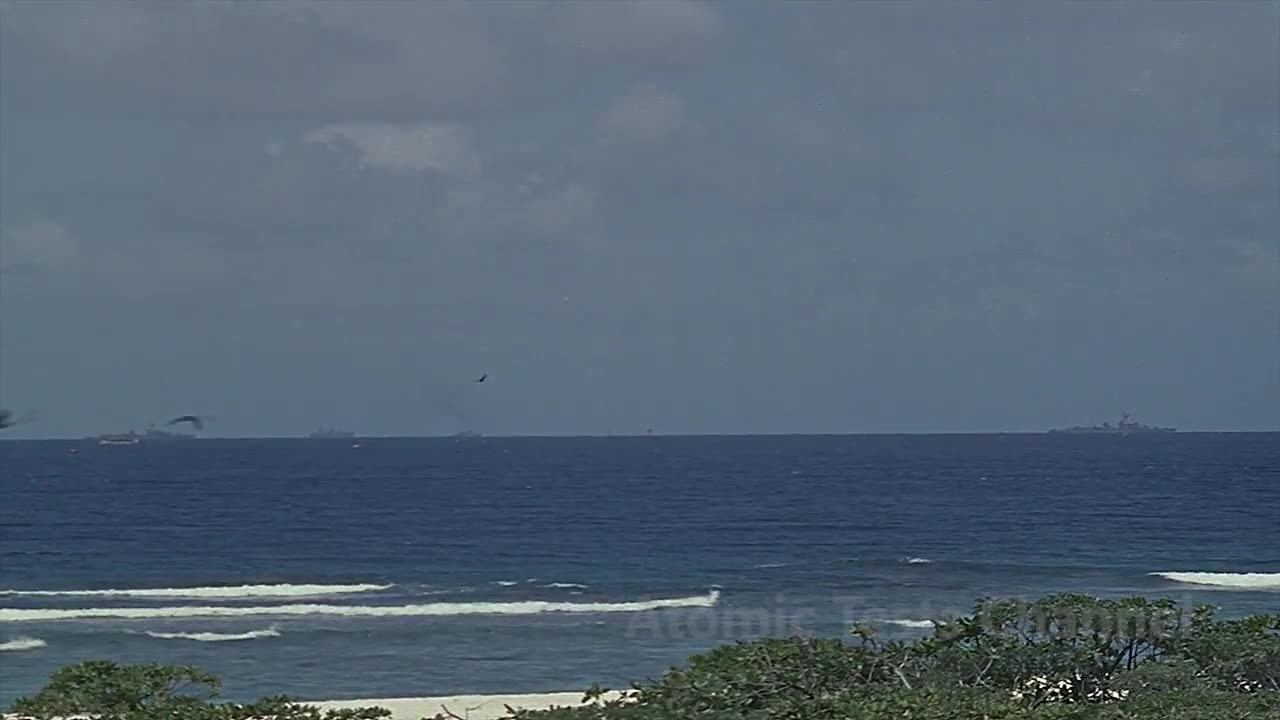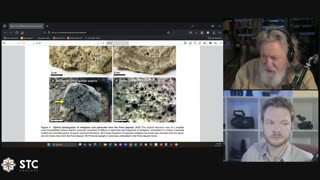Premium Only Content

Atomic Underwater Chaos: Unveiling the 1958 Footage
On May 16, 1958, during the Wahoo nuclear test, the precise test conditions were met, paving the way for the detonation of a nuclear device. Within a mere second of the detonation, a remarkable phenomenon occurred—an explosive spray dome emerged, soaring to an astonishing height of 840 feet (260 meters) within just seven seconds. The spray dome assumed a distinctive shape, resembling a cone with sides sloped at a 45-degree angle. Six seconds into the blast, plumes burst forth from the spray dome in all directions, signifying the immense forces at play.
The vertical plume continued its ascent for 12 seconds after the blast, while the lateral plumes traversed the expanse for a remarkable 20 seconds before succumbing to gravity. At the 20-second mark, the diameter of the spray dome had expanded to approximately 3,800 feet (1,200 meters). Concurrently, the base surge, influenced by a 15-knot (17 mph; 28 km/h) wind, extended downwind to cover a radius of 8,000 feet (2,400 meters) in a mere 1.7 seconds.
This formidable base surge could be observed for an astounding three and a half minutes, and even longer from an aerial perspective, as it continued its relentless journey across the ocean. After the dissipation of both the spray dome and base surge, a conspicuous foam patch emerged, spanning from the surface zero water and extending over an impressive distance of 6,000 feet (1,800 meters).
The calculated magnitude of the nuclear blast was a staggering 9 kilotons of TNT (38 TJ). Importantly, all resultant fallout remained confined within the anticipated fallout area, with a maximum radiation level of 0.030 R/hr. The target ship, positioned at a mere 5,900 yards (2.9 nautical miles; 3.4 miles; 5.4 kilometers) from the epicenter, bore the brunt of the shockwave, enduring severe vibrations and violent shaking. Additionally, a Moran merchant marine ship, located approximately 2,346 feet (715 meters) away, experienced immobilization due to shock-induced damage to its primary and auxiliary equipment, coupled with minor hull damage. Notably, just one hour and ten minutes following the detonation, a water sample taken directly above the blast location revealed a radiation level of 5 R/hr. The retrieval team ventured into a field registering 3.8 R/hr approximately one hour and thirty-five minutes after the detonation.
-
 LIVE
LIVE
GritsGG
4 hours agoWe Are Winning Every Game! Win Streaking! 👑 2998+ Ws
535 watching -
 8:28
8:28
nospeedlimitgermany
3 days ago $1.18 earnedFord Mustang GT 5.0 V8 421 PS Top Speed Drive German Autobahn No Speed Limit POV
6.99K6 -
 LIVE
LIVE
SilverFox
3 hours ago🔴LIVE - Fox FINALLY plays FORTNITE
43 watching -
 LIVE
LIVE
Fragniac
13 minutes ago🌕 Claire Obscur: EXPEDITION 33 - Act II⚔
34 watching -
 28:39
28:39
The Shannon Joy Show
17 hours ago🔥🔥Are Big Tech ‘Wearables’ Really The Key To Good Health? Dr. Chad Walding Says NO! Special Health Update: (Sponsored By Native Path!)🔥🔥
17.7K6 -
 4:53
4:53
Talk Nerdy Sports - The Ultimate Sports Betting Podcast
2 hours agoHome Run Heat & European Sweep: Saturday's Sharps Only Card
3.76K -
 15:06
15:06
Doc Rich
2 days agoThey Leaked Classified Intel...
18.7K21 -
 LIVE
LIVE
I_Came_With_Fire_Podcast
12 hours agoSoft POWER: "American First" Does NOT Mean "America Alone"
277 watching -
 1:15:25
1:15:25
Wendy Bell Radio
9 hours agoPet Talk With The Pet Doc
34.7K4 -
 2:24:28
2:24:28
Squaring The Circle, A Randall Carlson Podcast
2 hours ago#053 New Discoveries In The Younger Dryas Impact Hypothesis - Squaring the Circle
14.1K3